
Robert Donald Cabana is the Associate Administrator of the National Aeronautics and Space Administration (NASA), a NASA astronaut, and a veteran of four Space Shuttle flights. He served as Chief of the Astronaut Office from 1994 to 1997 and as director of the John F. Kennedy Space Center from 2008 to 2021. He is also a former naval flight officer and naval aviator in the United States Marine Corps.

Bonnie Jeanne Dunbar is an American engineer and retired NASA astronaut. She flew on five Space Shuttle missions between 1985 and 1998, including two dockings with the Mir space station.
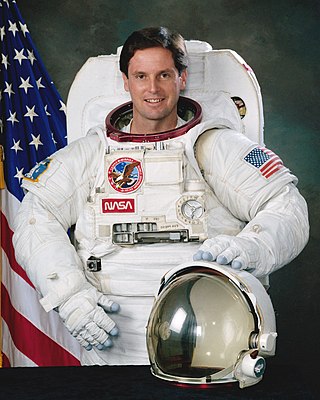
Gregory Jordan Harbaugh is an aeronautical/astronautical engineer and former NASA astronaut. He flew on four space shuttle missions as a mission specialist with responsibilities that included Remote Manipulator System (RMS) operation and Extravehicular Activity (EVAs). He performed three spacewalks during the shuttle missions including in support of repair/refurbishment of the Hubble Space Telescope.
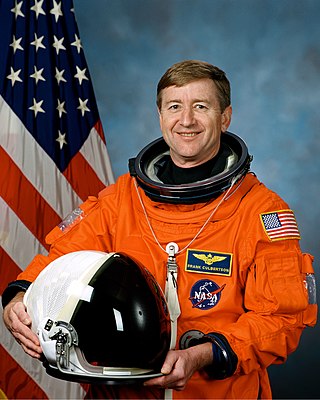
Frank Lee Culbertson Jr. is an American former naval officer and aviator, test pilot, aerospace engineer, NASA astronaut, graduate of the US Naval Academy, and member of the United States Astronaut Hall of Fame. He served as the commander of the International Space Station for almost four months in 2001 and was the only U.S. citizen not on Earth when the September 11 attacks occurred.
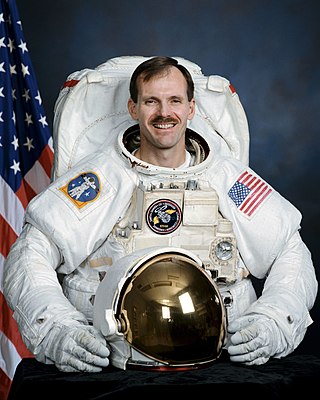
Steven Lee Smith, is an American technology executive and a former NASA astronaut, being a veteran of four space flights covering 16 million miles and seven spacewalks, totaling 49 hours and 25 minutes. Smith’s spacewalk time places him in 14th on the all-time American and World spacewalk duration lists.

Kathryn Ryan Cordell Thornton is an American scientist and a former NASA astronaut with over 975 hours in space, including 21 hours of extravehicular activity. She was the associate dean for graduate programs at the University of Virginia School of Engineering and Applied Science, currently a professor of mechanical and aerospace engineering.

Daniel M. Tani is an American engineer and retired NASA astronaut. He was born in Ridley Park, Pennsylvania, but considers Lombard, Illinois, to be his hometown.

Peter Jeffrey Kelsay Wisoff is an American physicist and former NASA astronaut. Wisoff qualified as mission specialist and flew in four Space Shuttle missions, with his first launch in 1993 and his last in 2000.

Mary Ellen Weber is an American executive, scientist, aviator, and a former NASA astronaut.

Donald Alan Thomas, Ph.D. is an American engineer and a former NASA astronaut.

Stephanie Diana Wilson is an American engineer and a NASA astronaut. She flew to space onboard three Space Shuttle missions, and is the second African American woman to go into space, after Mae Jemison. As of 2022, her 42 days in space are the second most of any female African American astronaut, having been surpassed by Jessica Watkins in 2022.

Glynn Stephen Lunney was an American NASA engineer. An employee of NASA since its creation in 1958, Lunney was a flight director during the Gemini and Apollo programs, and was on duty during historic events such as the Apollo 11 lunar ascent and the pivotal hours of the Apollo 13 crisis. At the end of the Apollo program, he became manager of the Apollo–Soyuz Test Project, the first collaboration in spaceflight between the United States and the Soviet Union. Later, he served as manager of the Space Shuttle program before leaving NASA in 1985 and later becoming a vice president of the United Space Alliance.

Karen LuJean Nyberg is an American mechanical engineer and retired NASA astronaut. Nyberg became the 50th woman in space on her first mission in 2008.

Thomas Henry Marshburn is an American physician and a former NASA astronaut. He is a veteran of three spaceflights to the International Space Station and holds the record for the oldest person to perform a spacewalk at 61 years old.
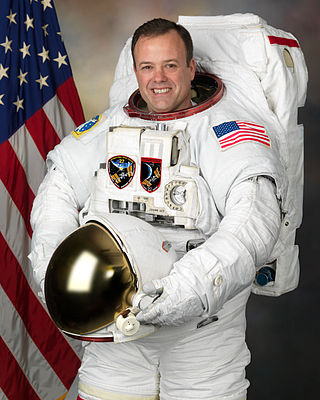
Ronald John Garan Jr. is a retired NASA astronaut. After graduating from State University of New York College at Oneonta in 1982, he joined the Air Force, becoming a Second Lieutenant in 1984. He became an F-16 pilot, and flew combat missions in Desert Shield and Desert Storm. Before becoming an astronaut he was the Operations Officer of the 40th Flight Test Squadron (FTS). He first flew in space as a mission specialist on the May 2008 STS-124 mission to the International Space Station (ISS). He returned to ISS on April 4, 2011, for a six-month stay as a member of Expedition 27.
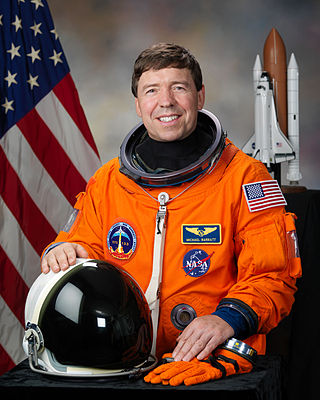
Michael Reed Barratt is an American physician and a NASA astronaut. Specializing in aerospace medicine, he served as a flight surgeon for NASA before his selection as an astronaut, and has played a role in developing NASA's space medicine programs for both the Shuttle-Mir Program and International Space Station. His first spaceflight was a long-duration mission to the International Space Station, as a flight engineer in the Expedition 19 and 20 crew. In March 2011, Barratt completed his second spaceflight as a crew member of STS-133. Barratt will pilot the SpaceX Crew-8 mission in Spring 2024.
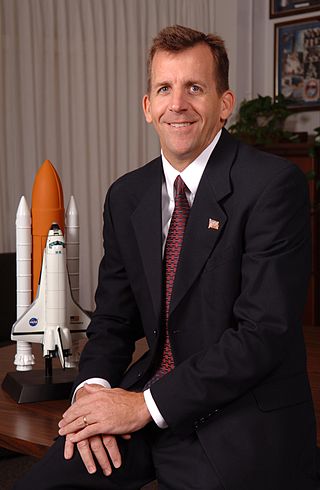
LeRoy Edward Cain is an American aerospace engineer who worked for NASA as a flight director, launch integration manager and deputy manager of the Space Shuttle Program. Cain may be best known to the public from footage and documentaries showing his work as the entry flight director for STS-107, the mission that ended in the catastrophic disintegration of Space Shuttle Columbia, February 1, 2003. Cain issued the famous "Lock the doors" command, initiating contingency procedures in mission control for the first time since the Space Shuttle Challenger disaster 17 years earlier.

Gerald D. Griffin is an American aeronautical engineer and former NASA official, who served as a flight director during the Apollo program and director of Johnson Space Center, succeeding Chris Kraft in 1982.
The National Space Biomedical Research Institute (NSBRI) was a NASA-funded consortium of institutions studying the health risks related to long-duration spaceflight and developing solutions to reduce those risks. The NSBRI was founded in 1997 through a NASA Cooperative Agreement. The founding director was Laurence R. Young of MIT. NSBRI's 16,400-square-foot headquarters facility was located in the BioScience Research Collaborative in Houston, Texas. The Institute shared the facility with Baylor College of Medicine's Center for Space Medicine. The official opening was held March 19, 2012.
Kavya K. Manyapu is an Indian–American aerospace engineer and scientist. She currently works at NASA in the Extravehicular Branch for Lunar Exploration missions within the Flight Operations Directorate at JSC. She was part of the Boeing team for nearly 10 years that developed the CST-100 Starliner spacecraft. She developed a fabric for self-cleaning space suits that uses carbon nanotubes to repel dust for use in future lunar and Mars missions.


















